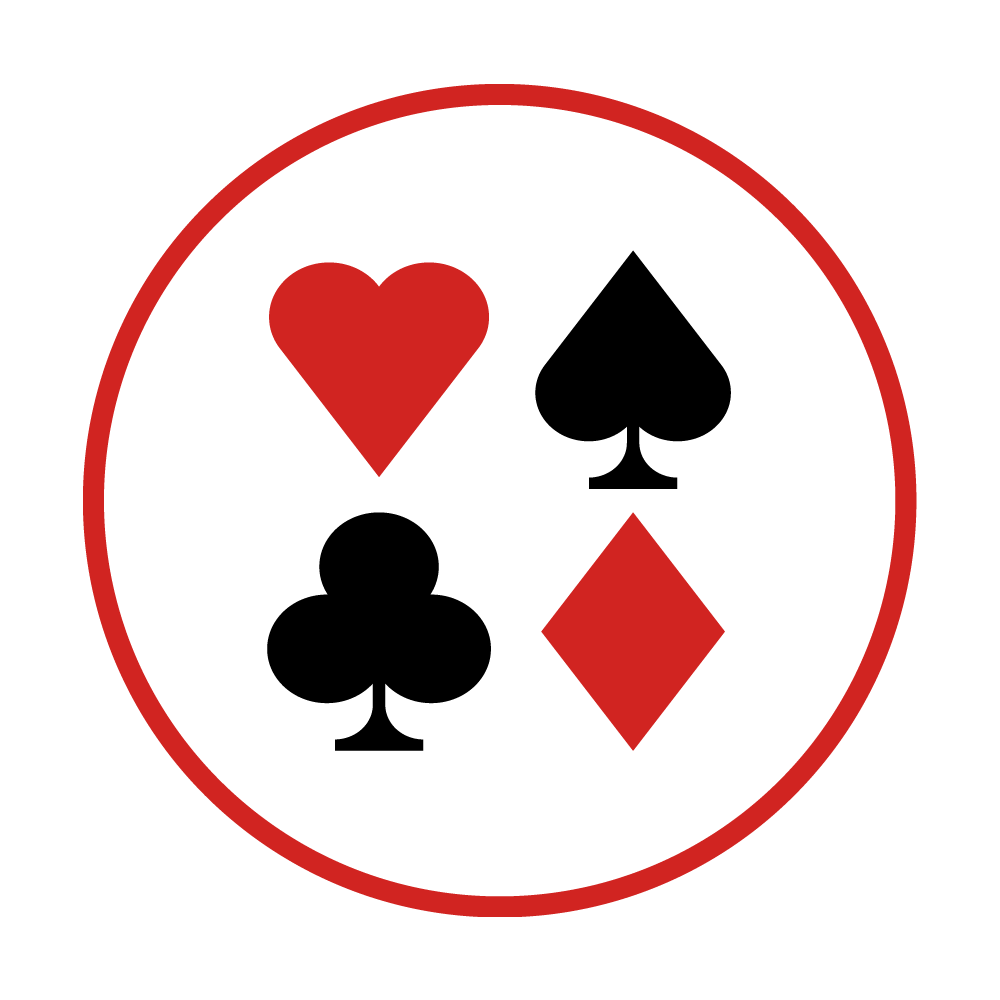Master the Grid: Your Ultimate Guide to Montana Solitaire (Gaps) – Strategy, Rules & Brain-Boosting Fun
Are you seeking a card game that truly puts your strategic thinking and patience to the test? Forget simple luck-based shuffles; enter the captivating world of Montana Solitaire, often known by its equally popular moniker, Gaps (or sometimes Addiction or Rouge et Noir). This unique single-player card game isn’t just about moving cards around; it’s a deep, brain-teasing puzzle that challenges you to orchestrate every move with foresight and precision.
If you’re a card lover yearning for a fresh, engaging challenge that promises hours of focused fun and a truly rewarding sense of accomplishment, then Montana Solitaire is your next obsession.
What is Montana Solitaire (Gaps)? A Strategic Card Puzzle Unveiled
Montana Solitaire, or Gaps, stands apart from many traditional solitaire games like Klondike or Spider Solitaire. Instead of building down in alternating colors or by suit, Montana presents you with a rigid grid and a specific, almost puzzle-like rule set. The game’s essence lies in meticulously arranging all cards from 2 to King within each suit, horizontally, across four rows.
Imagine a deck of 52 cards laid out before you, but with a twist: all the Aces have been removed, creating four initial empty spaces. Your mission, should you choose to accept it, is to fill these gaps, not with random cards, but with those that precisely continue a suit sequence. It’s a game where every placement matters, where a single misstep can block your path to victory, and where the true joy comes from untangling a seemingly impossible jumble into perfect order.
The allure of Montana Solitaire is its elegant simplicity combined with profound strategic depth. It’s easy to learn the basic rules, but mastering the art of winning requires an entirely different level of focus and planning.
How to Play Montana Solitaire: A Step-by-Step Guide
To conquer Montana Solitaire, you first need to understand its unique setup and fundamental rules.
1. The Setup:
- Deck: You’ll need a standard 52-card deck.
- Remove the Aces: This is crucial! Before you begin, take out all four Aces from the deck. They are not used in gameplay, but they create the vital initial empty spaces you’ll need.
- Deal the Cards: Shuffle the remaining 48 cards thoroughly. Deal them face-up into four rows of 13 cards each.
- The Gaps: Once all cards are dealt, you will have four “gaps” or empty spaces where the Aces would have been. These gaps are your only means of moving cards.
2. The Goal:
- Your ultimate objective is to arrange all cards in each of the four suits (Hearts, Diamonds, Clubs, Spades) in ascending order, from 2 to King, within their respective rows.
- For example: Row 1 might end up being ♠2, ♠3, ♠4, …, ♠K.
- Each suit should form a complete, unbroken sequence from 2 to King, with each card immediately to the right of the card one rank lower, and in the same suit.
3. The Movement Rule (The Core Mechanic):
- You can only move a card to an empty space (a “gap”).
- A card can only be moved into an empty space if:
- Its left neighbor (the card immediately to the left of the empty space) is the same suit.
- And the left neighbor is one rank lower than the card you wish to move.
- Example: If you have an empty space, and the card to its left is the ♠6, you can move the ♠7 into that empty space. This creates a new empty space where the ♠7 used to be.
- Exception (The Leftmost Position): If an empty space is in the leftmost position of a row (i.e., there is no card to its left), you can only move a 2 of any suit into that spot. This is because a 2 is the lowest card in the sequence and doesn’t require a preceding card.
4. Gameplay:
- You continue moving cards, one at a time, into valid empty spaces.
- Each move creates a new empty space.
- There’s no redeal, no stock pile, and no limit to how many times you can move a card, as long as the rule is followed.
- The game ends when you either successfully arrange all suits (you win!) or you run out of valid moves (you lose).
Strategic Tips for Winning Montana Solitaire
Winning Montana Solitaire is often about 80% skill and 20% the initial deal. While some deals are genuinely unsolvable, a significant majority can be won with careful planning and smart execution. Here are some essential strategies to boost your win rate:
- Prioritize Creating and Extending Sequences:
- Always look for opportunities to place a card that extends an existing sequence. Getting a ♠6 next to a ♠5 is more valuable than just moving a random card.
- Longer sequences (like ♠2-♠3-♠4-♠5) are your goal. Focus on building these whenever possible.
- Understand the Power of Empty Spaces (Gaps):
- Empty spaces are your currency for moves. Don’t just fill them; manage them.
- Strategic Placement: When you move a card, you create a new empty space. Think about where that new empty space will appear and if it will be useful for a subsequent move. Sometimes, a move might seem good, but the resulting gap is in a useless position.
- Opening Blocked Cards: The primary use of gaps is to “unlock” cards that are currently trapped. If a ♠7 is stuck behind a ♥Q, and you need to move the ♥Q, you’ll need an empty space for the ♥Q to go into.
- Target Kings Early (and Strategically):
- Kings are the highest card in each suit, meaning they can only be placed to the right of a Queen. They often become bottlenecks.
- Try to get Kings into their final positions (to the right of a Queen of the same suit) as early as possible without trapping other vital cards. A King that’s not to the right of its Queen is essentially “dead weight” until its Queen is in place.
- Work from Left to Right (Generally):
- Since sequences build from left to right, focusing on getting the 2s, then 3s, then 4s, etc., into their correct leftmost positions can be beneficial. This opens up more possibilities for subsequent cards in the sequence.
- Remember, only a 2 can start a sequence in the leftmost position of a row.
- Avoid Creating “Deadlock” Situations:
- This is the most critical tip. A “deadlock” occurs when you move a card, and the resulting empty space makes it impossible to move another crucial card you need later.
- Before making a move, quickly scan the board: “If I move this card here, what new gap does it create? Is that gap going to be helpful or will it trap a card I desperately need to move?”
- Sometimes, it’s better to make a less-than-perfect move if it prevents a worse deadlock later.
- Visualize Several Moves Ahead:
- Unlike many solitaire games, Montana often requires you to think 2, 3, or even 4 moves in advance. “If I move A, then B can move. If B moves, it frees C, which can go to the gap created by A.”
- This takes practice, but it’s the hallmark of a skilled Montana player.
- Focus on One or Two Suits (Initially):
- Trying to solve all four suits simultaneously can be overwhelming. Sometimes, focusing intensely on completing one suit can create enough empty space and flexibility to then tackle the others.
- However, don’t get so focused that you miss easy moves in other suits that could open up big opportunities.
- Patience, Patience, Patience:
- The game is literally called “Montana” (implying a long, winding road) and “Addiction” (because it’s so hard to put down!). You will get stuck. You will make mistakes. Take breaks, come back with fresh eyes, and don’t be afraid to restart if a deal seems truly hopeless.
Why Montana Solitaire is More Than Just a Game
Beyond the simple act of arranging cards, Montana Solitaire offers a wealth of cognitive and emotional benefits:
- Brain-Boosting Fun: It’s a fantastic mental workout. The game hones your logical reasoning, strategic planning, pattern recognition, and problem-solving skills. Each deal presents a new, intricate puzzle that keeps your brain active and engaged.
- Enhanced Focus and Concentration: To win, you must pay close attention to the entire tableau, anticipating consequences and spotting opportunities. This intense focus can improve your overall concentration skills.
- Relaxing & Meditative Escape: Despite its strategic depth, Montana Solitaire provides a surprisingly calming experience. The repetitive, rule-bound nature of the game can be almost meditative, allowing you to switch off from daily stresses and immerse yourself in a quiet, analytical challenge.
- Sense of Accomplishment: Winning a game of Montana Solitaire, especially a tricky one, brings a genuine rush of satisfaction. It’s a testament to your careful planning and clever execution, a true intellectual victory.
- Highly Replayable: With 48 cards and endless possible deals, every game of Montana Solitaire is a unique puzzle. You’ll never play the exact same game twice, ensuring fresh challenges and enduring appeal.
- Accessibility: All you need is a deck of cards or a digital version. The rules are straightforward enough for beginners to grasp quickly, while the strategic layers offer endless depth for seasoned players.
Variations and Related Games
Montana Solitaire goes by a few names, often interchangeably used:
- Gaps: This is perhaps the most common alternative name, perfectly describing the central mechanic of using empty spaces.
- Addiction: Reflecting its highly engrossing and challenging nature.
- Rouge et Noir: Another less common name, sometimes implying a version where suits are arranged by color, though the standard Montana Solitaire typically arranges by specific suit.
While its mechanics are unique, if you enjoy the strategic depth of Montana Solitaire, you might also find pleasure in other brain-teaser card games like:
- FreeCell: Another highly strategic solitaire game where almost every deal is solvable, relying on careful management of “free cells” to move cards.
- Spider Solitaire: While different in mechanics (building sequences within columns), Spider Solitaire also demands significant planning and foresight, especially in its two or four-suit variations.
Where to Play Montana Solitaire (Gaps)
Ready to test your mettle against the Montana grid? You have several convenient options:
- With a Physical Deck: This is the most traditional and satisfying way to play for many. Just grab a standard 52-card deck, remove the Aces, shuffle, and deal! It’s a great way to unplug and engage with the tactile experience of cards.
- Online Games: Numerous websites offer free online versions of Montana Solitaire (or Gaps). A quick search will reveal many options, often with undo buttons and hints, which can be helpful for beginners.
- Mobile Apps: For gaming on the go, you’ll find a plethora of Montana Solitaire apps available for both iOS and Android devices. These often come with features like daily challenges, statistics tracking, and customizable themes.
Frequently Asked Questions (FAQs) About Montana Solitaire
Q: Is every game of Montana Solitaire solvable?
A: No, unlike FreeCell, not every deal of Montana Solitaire is solvable. Some initial layouts simply don’t offer a path to victory, no matter how skilled you are. However, a significant majority can be won with proper strategy.
Q: What happens to the Aces in Montana Solitaire?
A: The Aces are removed from the deck before gameplay begins. They are not used in the game at all. Their removal creates the initial four empty spaces (gaps) that are crucial for moving cards.
Q: Can I move a card to any empty space?
A: No. You can only move a card to an empty space if the card immediately to its left is the same suit and one rank lower than the card you want to move. The only exception is placing a 2 in an empty space at the very beginning of a row.
Q: Is it called Montana Solitaire or Gaps Solitaire?
A: Both names are widely used and refer to the same game. “Gaps” is often favored as it directly describes the core mechanic of the game.
Q: Is Montana Solitaire more luck or skill-based?
A: Montana Solitaire is heavily skill-based. While the initial deal introduces an element of luck (some deals are harder or unsolvable), your ability to plan, strategize, and manage the gaps is the primary determinant of success.
Embrace the Challenge!
Montana Solitaire (Gaps) is a testament to the enduring appeal of well-designed card games. It’s a game that respects your intelligence, rewards your patience, and offers a unique blend of challenge and relaxation. If you’re ready to move beyond the familiar and dive into a strategic puzzle that will truly engage your mind, then shuffle up, deal out those 48 cards, and prepare to master the grid. Your next favorite brain-boosting card game awaits!
🃏 Endless Replayability – Every game shuffles differently


